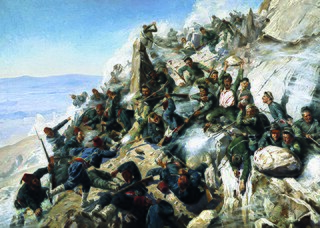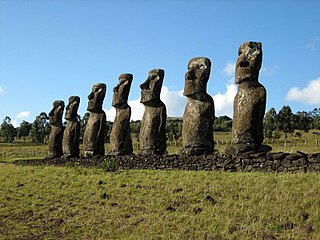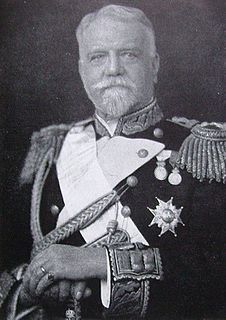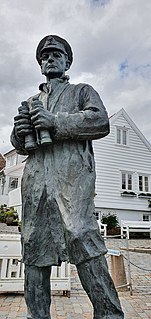Contents
| |||||
| Centuries: | |||||
|---|---|---|---|---|---|
| Decades: | |||||
| See also: | 1801 in Denmark List of years in Norway | ||||
Events in the year 1801 in Norway.
| |||||
| Centuries: | |||||
|---|---|---|---|---|---|
| Decades: | |||||
| See also: | 1801 in Denmark List of years in Norway | ||||
Events in the year 1801 in Norway.

1801 (MDCCCI) was a common year starting on Thursday of the Gregorian calendar and a common year starting on Tuesday of the Julian calendar, the 1801st year of the Common Era (CE) and Anno Domini (AD) designations, the 801st year of the 2nd millennium, the 1st year of the 19th century, and the 2nd year of the 1800s decade. As of the start of 1801, the Gregorian calendar was 12 days ahead of the Julian calendar, which remained in localized use until 1923.

1807 (MDCCCVII) was a common year starting on Thursday of the Gregorian calendar and a common year starting on Tuesday of the Julian calendar, the 1807th year of the Common Era (CE) and Anno Domini (AD) designations, the 807th year of the 2nd millennium, the 7th year of the 19th century, and the 8th year of the 1800s decade. As of the start of 1807, the Gregorian calendar was 12 days ahead of the Julian calendar, which remained in localized use until 1923.

1877 (MDCCCLXXVII) was a common year starting on Monday of the Gregorian calendar and a common year starting on Saturday of the Julian calendar, the 1877th year of the Common Era (CE) and Anno Domini (AD) designations, the 877th year of the 2nd millennium, the 77th year of the 19th century, and the 8th year of the 1870s decade. As of the start of 1877, the Gregorian calendar was 12 days ahead of the Julian calendar, which remained in localized use until 1923.

1799 (MDCCXCIX) was a common year starting on Tuesday of the Gregorian calendar and a common year starting on Saturday of the Julian calendar, the 1799th year of the Common Era (CE) and Anno Domini (AD) designations, the 799th year of the 2nd millennium, the 99th year of the 18th century, and the 10th and last year of the 1790s decade. As of the start of 1799, the Gregorian calendar was 11 days ahead of the Julian calendar, which remained in localized use until 1923.

1775 (MDCCLXXV) was a common year starting on Sunday of the Gregorian calendar and a common year starting on Thursday of the Julian calendar, the 1775th year of the Common Era (CE) and Anno Domini (AD) designations, the 775th year of the 2nd millennium, the 75th year of the 18th century, and the 6th year of the 1770s decade. As of the start of 1775, the Gregorian calendar was 11 days ahead of the Julian calendar, which remained in localized use until 1923.

1741 (MDCCXLI) was a common year starting on Sunday of the Gregorian calendar and a common year starting on Thursday of the Julian calendar, the 1741st year of the Common Era (CE) and Anno Domini (AD) designations, the 741st year of the 2nd millennium, the 41st year of the 18th century, and the 2nd year of the 1740s decade. As of the start of 1741, the Gregorian calendar was 11 days ahead of the Julian calendar, which remained in localized use until 1923.

1722 (MDCCXXII) was a common year starting on Thursday of the Gregorian calendar and a common year starting on Monday of the Julian calendar, the 1722nd year of the Common Era (CE) and Anno Domini (AD) designations, the 722nd year of the 2nd millennium, the 22nd year of the 18th century, and the 3rd year of the 1720s decade. As of the start of 1722, the Gregorian calendar was 11 days ahead of the Julian calendar, which remained in localized use until 1923.
Rear admiral is a senior naval flag officer rank, equivalent to a major general and air vice marshal and above that of a commodore and captain, but below that of a vice admiral. It is regarded as a two star "admiral" rank. It is often regarded as a two-star rank with a NATO code of OF-7.

Sir Charles Hardy was a Royal Navy officer and politician who sat in the House of Commons between 1764 and 1780. He served as colonial governor of New York from 1755 to 1757.
Vice-Admiral Hyde Parker CB, sometimes referred to as Hyde Parker III, was a Royal Navy officer. As a junior officer he took part in the capture of the Cape of Good Hope in January 1806 during the Napoleonic Wars. He also commanded the naval forces at the siege of Machias in September 1814 and took the surrender of the frigate USS President in January 1815 during the War of 1812. He became First Naval Lord in February 1852 and in that capacity he ensured that all new warships being procured were propelled by steam and he also increased the size of the active fleet.
Events from the year 1801 in the United Kingdom. The Acts of Union 1800 came into force this year.

Count Carl August Ehrensvärd was a Swedish Navy admiral, politician and Minister for Naval Affairs 1907–1911.
Events in the year 1943 in Norway.
The Second League of Armed Neutrality or the League of the North was an alliance of the north European naval powers Denmark–Norway, Prussia, Sweden, and Russia. It existed between 1800 and 1801 during the War of the Second Coalition and was initiated by Tsar Paul I of Russia. It was a revival of the First League of Armed Neutrality (1780), which had been quite successful during the American War of Independence in isolating Britain and resisting attempts to interfere with their shipping. However, unlike the First League, the Second League was considered to be much less successful.
Events in the year 1859 in Norway.

Admiral George Stewart, 8th Earl of Galloway, styled Lord Garlies between 1773 and 1806, was a British naval commander and politician.

Thore Horve was a Norwegian naval officer and businessperson. He is best known for his naval commands and efforts during World War II, for leading the Royal Norwegian Navy from 1946 to 1949 and in 1951, and for his work to compensate war sailors many years later.
Events in the year 1737 in Norway.
Events from the year 1793 in France.

The second British Invasion of the Danish West Indies took place in December 1807 when a British fleet captured the Danish islands of St Thomas on 22 December and Santa Cruz on 25 December. The Danes did not resist and the invasion was bloodless. This British occupation of the Danish West Indies lasted until 20 November 1815, when Britain returned the islands to Denmark.